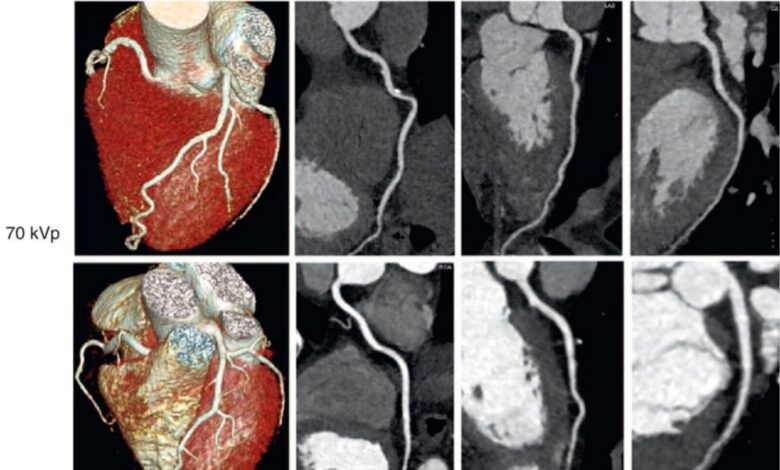STABLE CHEST PAIN? CCTA IS YOUR ANSWER

The information that follows may be as important as any previously reported here! I’m referring to a 2021 recommendation from the American College of Cardiology and the American Heart Association’s Joint Committee stating that for patients with stable chest pain, a safe, non-invasive procedure is preferred over invasive coronary angiography.
Stable chest pain is that which occurs with exertion or emotional stress and is relieved quickly by rest or sublingual nitroglycerin. It is chest pain that has been occurring for awhile and has not gotten worse over time. It is pain suspected of being due to coronary artery narrowing (stenosis), but that has not been proven. These patients don’t yet know if they have coronary disease.
The procedure to which I refer is Coronary Computed Tomographic Angiography (CCTA). It is a CT of the heart with intravenous contrast, “dye,” that with incredible accuracy, diagnoses blockages in the coronary arteries. It is safer and much easier perform when compared to invasive coronary angiography. Cardiac catheterization requires arterial puncture in the groin or wrist followed by catheter insertion into an artery and threading it to the openings of the coronary arteries. Then contrast (dye) is injected directly into the coronary arteries. These are all high risk procedures even in the best of hands. The risk of complications such as coronary artery rupture/tear, heart attack, arrhythmia, and bleeding are high with cardiac catheterization, but are minimal to non-existent with CCTA.
The accuracy of CCTA is remarkable. It has a “96% diagnostic accuracy finding blockages of 50% or more…..in segments with 70% luminal stenosis [blockages], diagnostic accuracy is 99%.” Only extensive calcification of an artery, or the presence of a stent, can affect accuracy. Analyses done to compare CCTA to traditional testing methods (exercise stress EKG, single-photon emission CT) showed better diagnostic accuracy with CCTA.
CCTA is non-invasive, safe, and widely available. It “provides high-quality images,” and has a high patient satisfaction rating as well. Thus far CCTA has not replaced exercise testing as the diagnostic test of choice, but I suspect it will one day. It is covered by Medicare so eventually patients will ask the doctor to order it for them.
Dr. G’s Opinion: CCTA sounds like a reliable diagnostic procedure and will probably increase in popularity soon. With 99% specificity and accuracy, there is no doubt of its value.
Reference: AFP Clinical Answers: What test is recommended for Intermediate-risk patients with stable chest pain? Am Fam Phys 2025 April;111(4):310.
Kaplan AK, Whitbeck N. CCTA to Evaluate for Coronary Artery Stenosis in Intermediate-Risk Patients with Stable Chest Pain Am Fam Phys 2024 Sept;110(3):298-300.





A cardiologist spoke to the retired docs of St Francis a couple of months ago. It seems like a giant leap in diagnosis.
J
Yes, it does.